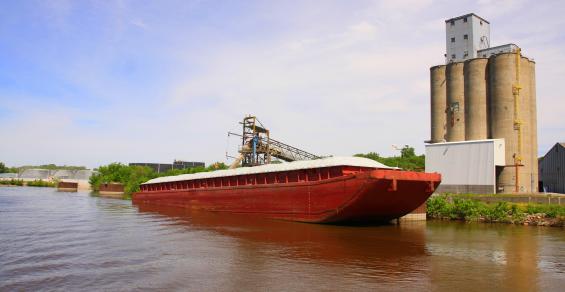Grain shippers delaying shipments and farmers using alternative options.
Expanding drought into the Mississippi River region has led to near-record to record-low water levels along a stretch from Missouri to Mississippi, resulting in significant transportation disruptions and causing great concern in the U.S. feed and grain industries.
USDA chief meteorologist Brad Rippey reported this week that water levels in New Madrid, Mo., Caruthersville, Mo., Osceola, Ark., and Memphis, Tenn., are currently below records set during two historic droughts in 1988 and 2012. In Greenville, Miss., levels are below a record set in the winter of 1963/1964.
“That is obviously causing transportation disruptions,” he said. “Barge movement is somewhat limited during these times of low water. Loads have to be lightened; the number of barges being towed by boats is limited because of the depth and the width of the channel.”
Rippey said some of the greatest impacts are occurring just below where the Missouri and Ohio River merge into the Mississippi River.
Water levels are expected to continue to drop in some areas over the next few days and weeks, with no appreciable relief expected in the near future, USDA said. This could spell really bad news as some regions are nearing minimum operating levels. For example, the U.S. Geological Survey shows the river gage levels on the Mississippi River at Memphis was -9.33 ft. on Oct. 25, down from 1.46 ft. last year and nearing the minimum operating limit of -12 ft. To put this into perspective, the highest gage reading this year was in March 2022 at 30.71 ft.
Mike Steenhoek, executive director of the Soy Transportation Coalition, called the conditions along the inland waterway system “very concerning.”
“The metaphor I routinely use – ‘Attaching a garden hose to a fire hydrant’ – continues to be very applicable,” he said. “Farmers are continuing to harvest an overall strong crop, but the inland waterway system – especially the lower Mississippi River – does not currently possess the normal capacity to accommodate it.”
The current state of the river particularly a challenge for the soybean industry, he explained, given how the September through February time period accounts for 80% of U.S. soybean exports. Over half of soybeans produced in the U.S. are exported. Sixty percent of all grain exported from the U.S. is shipped on the Mississippi River as well as 78% of the world’s exports in feed grains and soybeans and most of the livestock and hogs produced nationally. Barge transportation is essential for connecting with international customers, Steenhoek said.
Depth restrictions of no greater than 9 ft. have been instituted on the Lower Mississippi River, a 24-30% decrease
“For every one foot of decreased water depth, 5,000 fewer bushels of soybeans are loaded into each barge. Therefore, a two to three feet reduction will result in 10,000-15,000 fewer bushels,” Steenhoek said.
Barges on the Lower Mississippi River are often loaded with 57,000 bushels and Upper Mississippi River barges will be loaded with 50,000 – 52,000 bushels due to the minimum 9 ft. navigation channel.
“The barge industry continues to maintain a maximum of 25 barges connected together along the Lower Mississippi River compared to 30, 35, or even 40 barges under normal conditions.”
Barge freight rates have fallen, but this is still 130% higher than the same period in 2021, Steenhoek said. USDA reported transporting a ton of soybeans – loaded in St. Louis – cost $72.58 per ton during the week of Oct. 18, down from $105.85 per ton during the week of Oct. 11. According to USDA, this decline in prices is due to softened demand as grain shippers are delaying deliveries until later in the year.
Steenhoek noted that farmers are also altering plans, including choosing to store their crops, delivering to a rail loading facility or delivering to processors.




